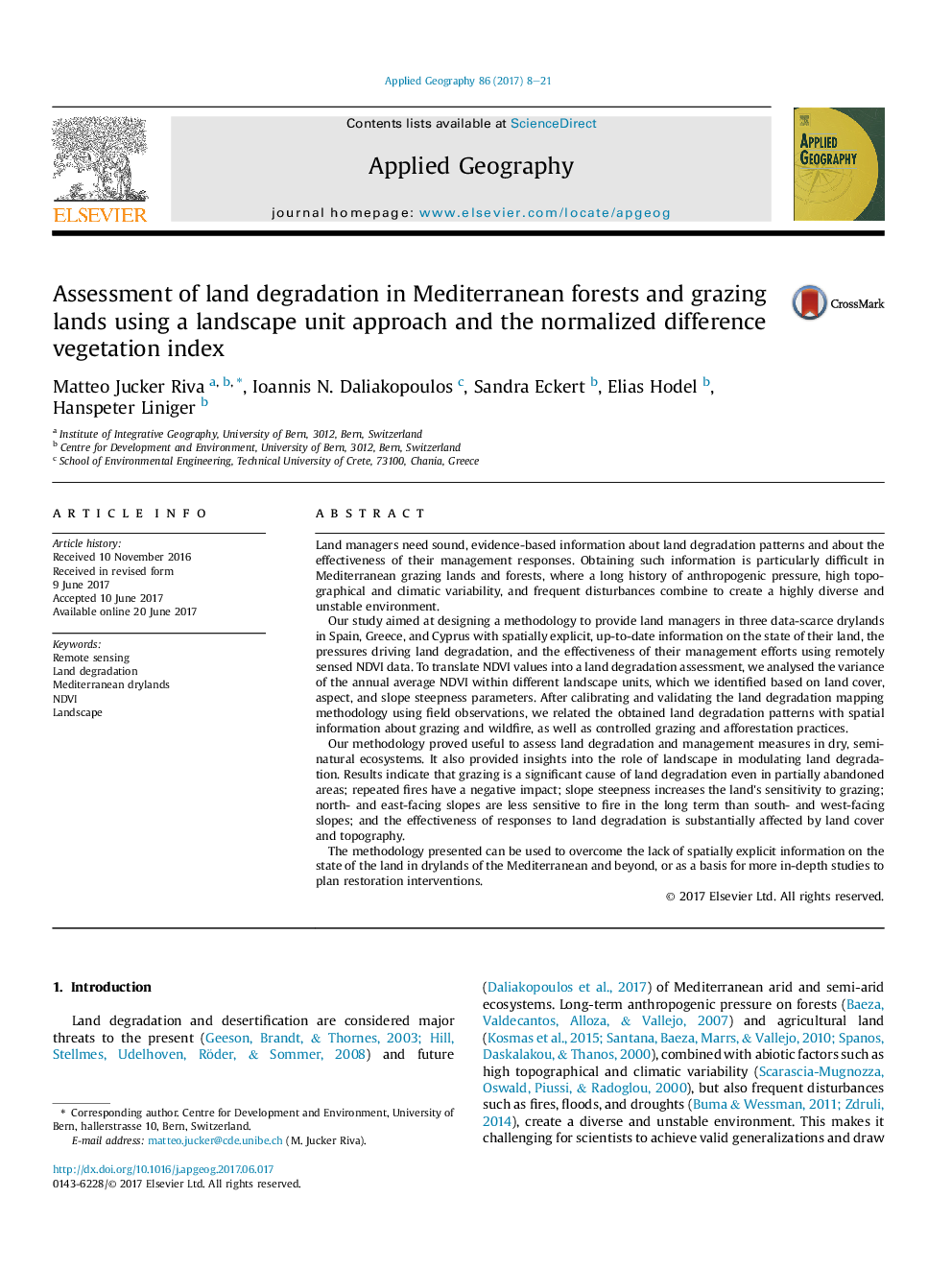| کد مقاله | کد نشریه | سال انتشار | مقاله انگلیسی | نسخه تمام متن |
|---|---|---|---|---|
| 6458314 | 1421031 | 2017 | 14 صفحه PDF | دانلود رایگان |
- NDVI variance across landscape units highlights land degradation in dryland.
- Pressure and response indicators are used to interpret land degradation pattern.
- Repeated fires have long term negative effect in southern exposed steep dry forest.
- Overgrazing is a relevant cause of land degradation even in depopulated areas.
- Landscape modulates the impact of pressure and the effectiveness of land management.
Land managers need sound, evidence-based information about land degradation patterns and about the effectiveness of their management responses. Obtaining such information is particularly difficult in Mediterranean grazing lands and forests, where a long history of anthropogenic pressure, high topographical and climatic variability, and frequent disturbances combine to create a highly diverse and unstable environment.Our study aimed at designing a methodology to provide land managers in three data-scarce drylands in Spain, Greece, and Cyprus with spatially explicit, up-to-date information on the state of their land, the pressures driving land degradation, and the effectiveness of their management efforts using remotely sensed NDVI data. To translate NDVI values into a land degradation assessment, we analysed the variance of the annual average NDVI within different landscape units, which we identified based on land cover, aspect, and slope steepness parameters. After calibrating and validating the land degradation mapping methodology using field observations, we related the obtained land degradation patterns with spatial information about grazing and wildfire, as well as controlled grazing and afforestation practices.Our methodology proved useful to assess land degradation and management measures in dry, semi-natural ecosystems. It also provided insights into the role of landscape in modulating land degradation. Results indicate that grazing is a significant cause of land degradation even in partially abandoned areas; repeated fires have a negative impact; slope steepness increases the land's sensitivity to grazing; north- and east-facing slopes are less sensitive to fire in the long term than south- and west-facing slopes; and the effectiveness of responses to land degradation is substantially affected by land cover and topography.The methodology presented can be used to overcome the lack of spatially explicit information on the state of the land in drylands of the Mediterranean and beyond, or as a basis for more in-depth studies to plan restoration interventions.
132
Journal: Applied Geography - Volume 86, September 2017, Pages 8-21
